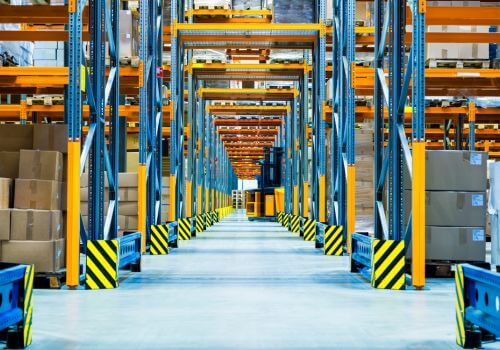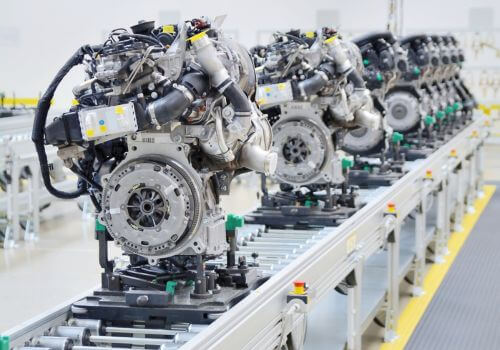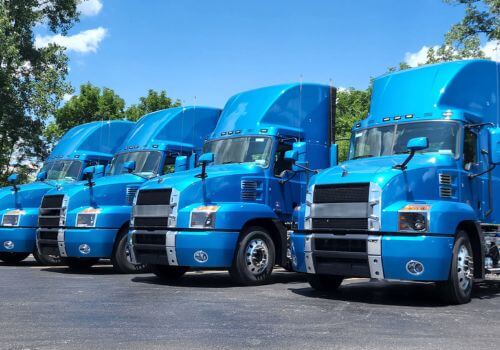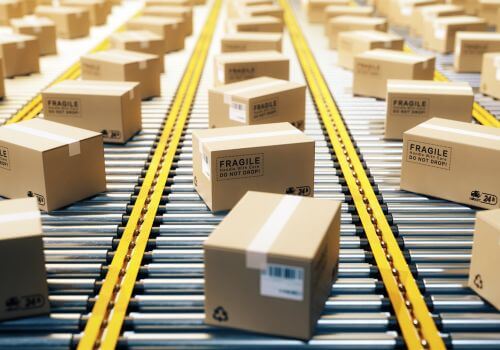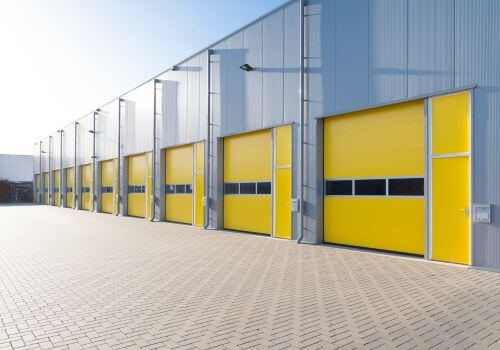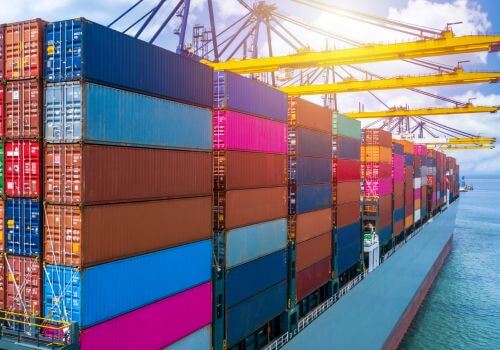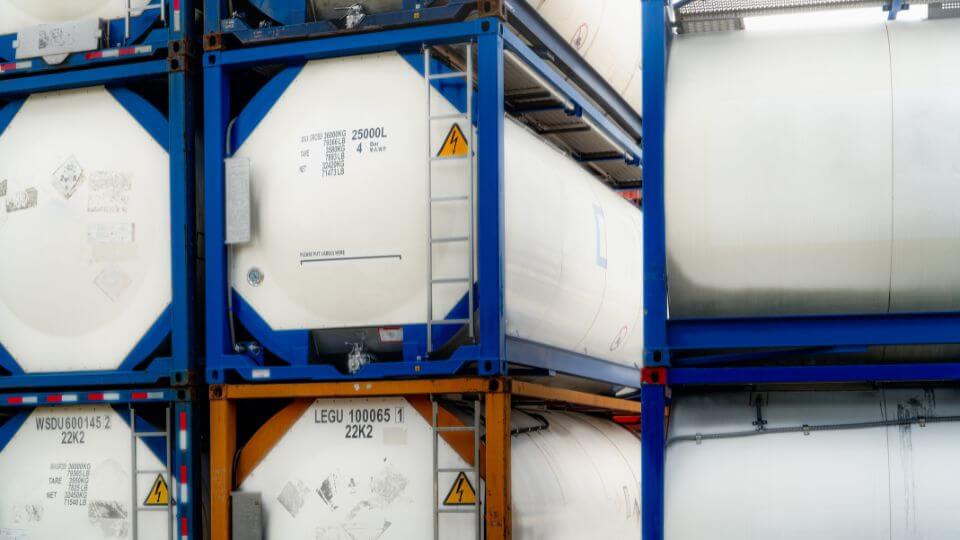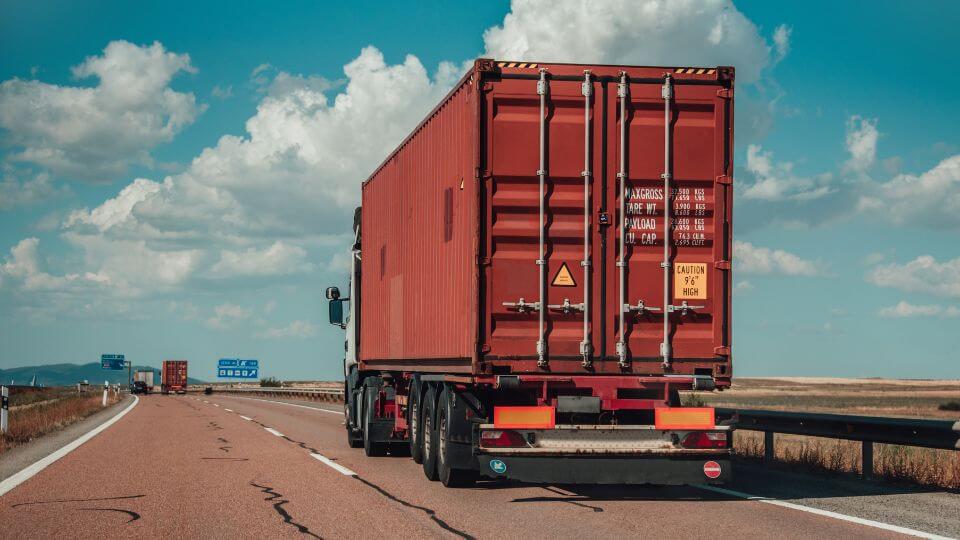Table of Contents
In the world of logistics and supply chain management, efficiency is the name of the game. As businesses strive to streamline their operations, reduce costs, and meet the demands of fast-paced markets, innovative solutions become paramount. One such solution that has gained prominence in recent years is “Cross Docking.” In this blog post, we’ll dive deep into the concept of cross docking, explore its benefits, examine the challenges it presents, and understand its pivotal role in modern logistics.
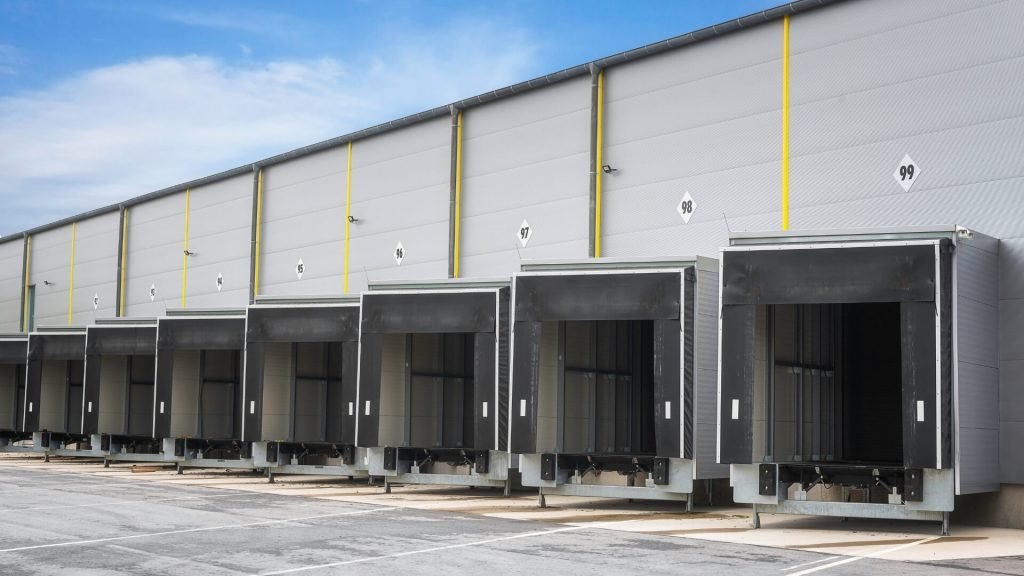

What is Cross Docking in Logistics?
Cross docking is a sophisticated logistics and supply chain management strategy designed to optimize the flow of goods from suppliers to end customers. Unlike traditional warehousing models that involve storing inventory for extended periods, cross docking minimizes storage time by facilitating the direct movement of products from inbound to outbound transportation with minimal handling and storage in between.
This logistics approach is analogous to the concept of a relay race, where the baton (in this case, the goods) is swiftly transferred from one runner (inbound vehicle) to the next (outbound vehicle) without a lengthy pause. The primary objective of cross docking is to expedite the entire supply chain process, from order placement to delivery, in order to meet the demands of fast-paced industries and evolving customer expectations.
Best-In-Class 3PL in the Midwest
How Does Cross Docking Work?
Cross docking is a sophisticated logistics technique that involves a precise orchestration of tasks to optimize the flow of goods through a supply chain. At its core, cross docking is about ensuring products move from suppliers to end customers with maximum efficiency and minimal handling and storage time. Here’s a detailed breakdown of how cross docking operates:
1. Receiving and Sorting:
The cross-docking process kicks off when inbound shipments arrive at a designated cross-docking facility, which is strategically positioned within the supply chain network. As shipments are unloaded from inbound vehicles, they are immediately sorted based on various criteria, such as destination, delivery route, product type, or customer order. This sorting is often done in a well-organized receiving area.
2. Temporary Storage (Optional):
While the essence of cross docking is to minimize storage, some facilities may have a limited temporary storage area. This space serves as a buffer and can accommodate minor delays or fluctuations in delivery schedules without disrupting the entire operation. However, the goal remains to keep storage time as brief as possible.
3. Matching and Combining:
This pivotal step involves the matching of products from different suppliers with specific customer orders or the grouping of items bound for the same delivery destination. Advanced logistics systems and software play a crucial role in ensuring precise matching, often considering factors like delivery windows, shipping methods, and order priorities. By consolidating orders efficiently, the cross-docking facility aims to maximize the efficiency of outbound shipments.
4. Outbound Shipping:
The final leg of the cross-docking process involves the loading of consolidated orders onto outbound transportation, such as trucks or delivery vans. Notably, this stage is executed with great efficiency, often without the need for any intermediate warehousing, where products are transferred directly from the cross-docking facility to their final destination. This seamless transition ensures that goods reach end customers, distribution centers, or retail locations promptly, meeting the demands of fast-paced industries.
The entire cross-docking operation hinges on precision, coordination, and real-time information exchange. Advanced technology systems, including barcoding, RFID (Radio-Frequency Identification), and warehouse management software, play a pivotal role in optimizing the workflow, ensuring accurate order consolidation, and facilitating rapid decision-making.
Top 10 Benefits of Cross Docking
Cross docking is a strategic approach to logistics that offers a range of advantages for businesses aiming to optimize their supply chain operations. Here, we’ll dissect these benefits in greater detail:
1. Reduced Inventory Holding Costs:
Cross docking significantly minimizes the need for long-term storage and warehousing. By swiftly moving products from inbound to outbound vehicles, companies can dramatically reduce the costs associated with holding inventory in warehouses. This includes expenses related to storage space, security, utilities, and labor.
2. Faster Order Fulfillment:
One of the most immediate and impactful benefits of cross docking is its ability to expedite order fulfillment. Products are processed and dispatched to customers or retail locations with unparalleled speed. This rapid turnaround time is especially critical in industries where meeting tight delivery windows and customer expectations are paramount.
3. Lower Transportation Costs:
Cross docking optimizes the routing of products, allowing for the consolidation of multiple orders into a single shipment. This consolidation minimizes the number of trips needed to transport goods, leading to significant reductions in transportation costs. Savings can be realized in terms of fuel, labor, vehicle maintenance, and overall logistics expenses.
4. Improved Inventory Control:
Cross docking fosters greater control over inventory levels and product turnover. Businesses can implement just-in-time inventory practices more effectively, ensuring that stock is replenished precisely when needed. This reduces the risk of overstocking, which ties up capital, or stockouts, which can lead to missed sales opportunities and dissatisfied customers.
5. Enhanced Supply Chain Visibility:
Modern cross-docking facilities leverage advanced technology and data analytics to provide real-time visibility into the movement of goods. This transparency allows businesses to monitor shipments, track delivery progress, and promptly address any issues or delays. Enhanced visibility is a crucial tool for proactive supply chain management.
6. Increased Agility and Responsiveness:
Cross docking fosters agility within the supply chain. It enables businesses to quickly respond to changing market conditions, consumer demands, or unforeseen disruptions. With the ability to swiftly redirect products to where they are needed most, companies can adapt to dynamic situations with ease.
7. Energy Efficiency:
By optimizing transportation routes and reducing the overall distance traveled by goods, cross docking contributes to energy efficiency and sustainability efforts. This not only lowers operational costs but also aligns with environmentally responsible business practices.
8. Enhanced Customer Satisfaction:
Faster order fulfillment, accurate deliveries, and reduced lead times all translate into improved customer satisfaction. Meeting or exceeding customer expectations is essential in competitive markets, and cross docking is a powerful tool for achieving this goal.
9. Streamlined Operations:
The streamlined nature of cross-docking operations simplifies processes and reduces the complexity of supply chain management. This efficiency translates into a more manageable and cost-effective operation overall.
10. Cost Savings and Competitiveness:
Perhaps the most compelling benefit of cross docking is the cost savings it offers. Lower inventory holding costs, reduced transportation expenses, and improved operational efficiency all contribute to a more competitive business model. Companies that embrace cross docking gain a distinct advantage in the market.
5 Common Challenges of Cross Docking
While cross docking offers numerous advantages, it is not without its own challenges and considerations. Addressing these factors is crucial for the successful implementation and execution of this logistics strategy. Here, we’ll delve into these challenges and offer insights into how businesses can navigate them:
1. Infrastructure and Facility Requirements:
Establishing and maintaining cross-docking facilities requires significant investment in infrastructure. These facilities must be strategically located within the supply chain network and equipped with the necessary technology and equipment for efficient sorting, handling, and transportation.
Businesses must carefully assess their facility needs, location choices, and budget considerations. Collaborating with experienced logistics partners or third-party logistics providers (3PLs) can help address infrastructure challenges.
2. Coordination and Timing:
Cross docking demands precise coordination among various stakeholders, including suppliers, transportation providers, and the cross-docking facility itself. Delays or disruptions in any part of the process can disrupt the entire operation.
Implementing robust communication channels and adopting advanced logistics software can aid in real-time coordination. Furthermore, contingency plans should be in place to address unexpected delays effectively.
3. Technology and Data Integration:
Effective cross docking relies heavily on technology systems for inventory management, order processing, and real-time data exchange. Ensuring seamless integration and data accuracy can be challenging.
Investing in integrated software solutions that connect suppliers, logistics partners, and the cross-docking facility is essential. Regular system updates and training for personnel are crucial to maintaining efficient operations.
4. Quality Control:
The rapid handling and sorting of products in cross-docking facilities increases the risk of errors, damaged goods, or mislabeled items. Ensuring quality control and order accuracy is paramount.
Implementing stringent quality control measures, including visual inspections and barcode scanning, can help identify and address issues promptly. Continuous employee training and adherence to best practices are essential for minimizing errors.
5. Regulatory Compliance:
Cross-border or international cross-docking operations may encounter regulatory challenges related to customs, tariffs, and documentation.
Staying informed about international trade regulations and working closely with customs authorities or experienced logistics partners can help navigate regulatory complexities effectively.
Cross Docking in Modern Logistics 2023
In today’s fast-paced and globally connected world, logistics and supply chain management have evolved into critical components of business success. Among the various strategies and innovations driving efficiency, cross docking stands out as a transformative approach that is revolutionizing the landscape of modern logistics. In this section, we’ll delve into how cross docking has adapted to the demands of contemporary supply chain management and its role in fostering efficiency and competitiveness.
1. Technology-Enabled Operations:
In modern logistics, cross docking has shed its traditional image of manual labor and paperwork. Today, technology reigns supreme within cross-docking facilities. These advanced centers are equipped with state-of-the-art inventory management systems, cutting-edge barcode scanning technology, RFID (Radio-Frequency Identification) systems, and real-time data analytics capabilities. These technologies collectively empower precise tracking, rapid sorting, and seamless order consolidation. The paramount consideration here is embracing these technology-driven operations. Investing in advanced logistics software and ensuring seamless integration across the supply chain network enhances visibility and operational efficiency, propelling cross docking into the digital age.
2. Real-Time Tracking and Visibility:
Cross docking operates at such speed that real-time tracking and visibility are imperative as any delays or errors have the potential to send ripples throughout the entire supply chain. To address this challenge, modern cross-docking facilities leverage technology for real-time tracking by employing GPS, sensors, and IoT (Internet of Things) devices that monitor goods at every stage of their journey. This heightened level of visibility empowers supply chain professionals to swiftly address issues, optimize transportation routes, and provide customers with precise delivery information. In a world where time is of the essence, real-time tracking is the cornerstone of operational success.
3. Predictive Analytics:
In the complex landscape of cross docking, predicting demand and optimizing operations is no small feat, especially in industries characterized by fluctuating customer preferences and dynamic markets. This is where predictive analytics and machine learning enter the scene as invaluable tools. By meticulously analyzing historical data, market trends, and customer behavior, businesses can fine-tune their cross-docking operations. Predictive algorithms play a pivotal role in optimizing inventory levels, order consolidation processes, and transportation routes, ultimately rendering operations more responsive and cost-effective. The power of data-driven decisions propels cross docking into the realm of precision and efficiency.
4. Automation and Robotics:
The demand for both speed and precision in cross docking often surpasses the capabilities of manual labor. To meet this demand, modern cross-docking facilities are increasingly integrating automation and robotics into their operations. Automated conveyor systems, robotic arms, and autonomous vehicles are employed for tasks such as sorting, loading, and transportation. These technological advancements not only accelerate operations but also significantly reduce the risk of errors and injuries. It’s the marriage of human ingenuity and automation that fuels the efficiency of modern cross docking.
5. Sustainability and Green Initiatives:
In an era where environmental concerns loom large, the logistics industry’s carbon footprint is a pressing issue. Reducing energy consumption and emissions has become a priority. Cross docking plays a pivotal role in sustainability efforts. By optimizing transportation routes and minimizing unnecessary storage, it significantly reduces energy consumption and carbon emissions. Businesses embracing green initiatives gain a competitive edge and align with the growing demands of environmentally conscious consumers. In cross docking, efficiency meets sustainability.
Best-In-Class 3PL in the Midwest
Conclusion
Cross docking is more than just a logistics strategy; it’s a catalyst for efficiency and competitiveness in modern supply chain management. By reducing costs, improving delivery times, and enhancing overall supply chain visibility, businesses can stay ahead in today’s dynamic markets. As technology continues to evolve, cross docking will likely remain at the forefront of innovative logistics solutions, helping businesses meet the ever-increasing demands of their customers.
In the end, it’s not just about moving goods – it’s about moving businesses forward.
Cross Docking FAQs
Here are some frequently asked questions related to cross docking:
What types of businesses commonly use cross docking?
Cross docking is commonly used in industries such as retail, e-commerce, food distribution, and manufacturing, where fast order turnaround and efficient inventory management are crucial.
Is cross docking suitable for all businesses?
Cross docking is most suitable for businesses that require fast order fulfillment, have a high volume of goods in transit, and can benefit from reducing inventory holding costs. It may not be suitable for businesses with specific storage or handling requirements.
How can businesses implement cross docking in its operations?
Implementing cross docking involves setting up the necessary infrastructure, technology systems, and coordination processes. Many businesses also partner with experienced logistics providers or utilize third-party cross-docking facilities for seamless integration into their supply chain.
Are there different types of cross docking?
Yes, there are several types of cross docking, including retail cross docking (for retail stores), opportunistic cross docking (for unplanned shipments), distributor cross docking (for distribution centers), and manufacturing cross docking (for production lines).
What are some of the industries that benefit most from cross docking?
Industries that benefit significantly from cross docking include automotive manufacturing (for just-in-time parts delivery), grocery retail (for fresh produce and perishables), e-commerce (for fast order fulfillment), and healthcare (for medical supplies and pharmaceuticals).
Can cross docking be used for international shipments and customs clearance?
Yes, cross docking can be used for international shipments, but it may involve additional challenges related to customs clearance, tariffs, and documentation. Businesses must work closely with customs authorities and logistics partners to navigate these complexities.
Is cross docking suitable for businesses with highly specialized or fragile products?
Cross docking is best suited for businesses with products that can withstand rapid handling and minimal storage. Highly specialized or fragile products may require specialized handling and storage solutions, making cross docking less suitable.

